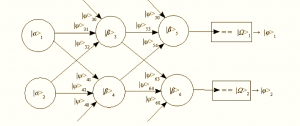I tend towards the skeptical in the face of monocausal explanatory frameworks, especially for ideas as big as human history and the factors that shaped it. The risk of being wrong is far too high while the payoff in terms of anything more than cocktail banter is too low, be it as a shaper of modern policy or bearer of moral prerogatives.
So the widely covered discussion of Schulz, et. al.’s AAAS Science paper, “The Church, intensive kinship, and global psychological variation” (paywall) is a curiosity that admits to cautious reading at the very least. The hypothesis is that Catholic Church prohibitions on consanguine marriage that began in the medieval period in Western Europe explain globally unusual aspects of the psychology of the people of those regions. By banning cousin marriage even out to the 6th degree in many cases, the Church forced people away from tribal ideas and more towards neolocal family structures. That, in turn, led to pro-social attitudes based on social trust rather than family power, and towards more individualistic and independent psychologies overall.
The methodology of the study is fairly complex: look at the correlations between consanguine marriages patterns and psychological attitudes, then try to explain those correlations away with a wide range of alternative data patterns, like the availability of irrigation or proximity to Roman roads, and so forth. Data experiments that look at Eastern Orthodox versus Western Church differences, or even between northern and southern Italy are used to test the theory further.
In the end, or at least until other data supervenes, the hypothesis stands as showing that reducing cousin or similar marriages is a “causal channel” for these patterns of individualism and social trust.… Read the rest









